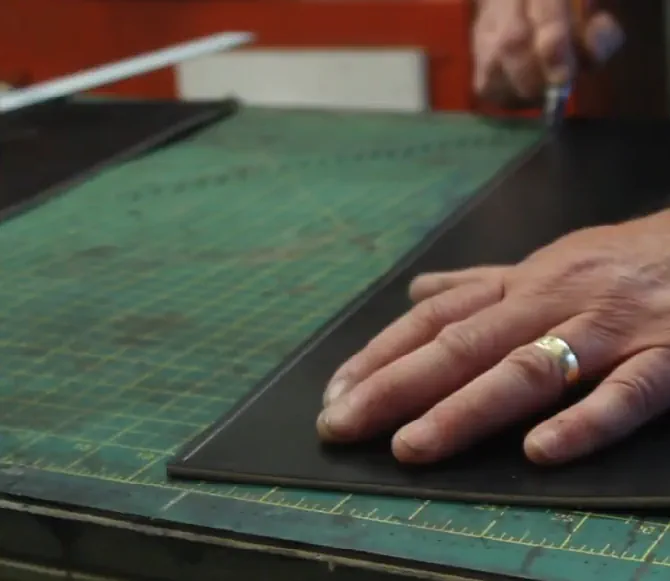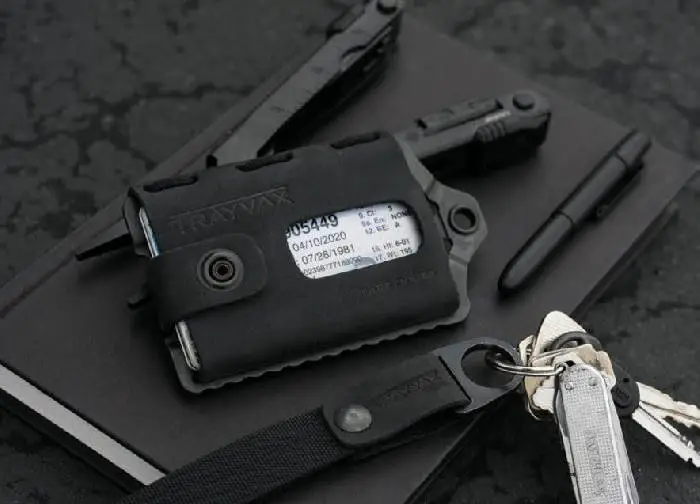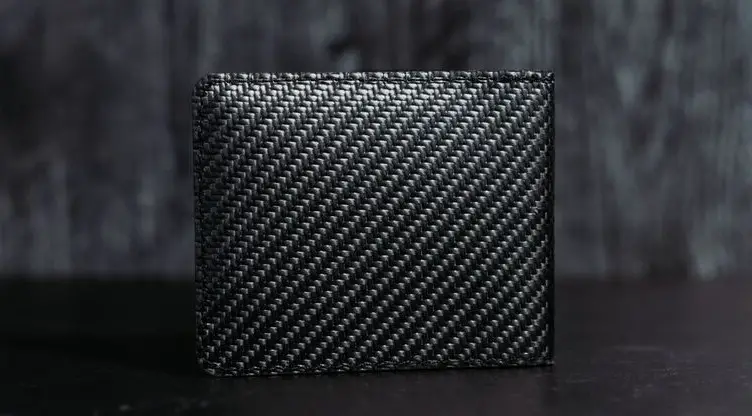
If you’re wondering what is bridle leather, you’ve come to the most complete guide on that topic on the Internet. We will cover everything there is to know about bridle leather.
What is bridle leather?
Bridle leather is a premium type of leather known for its exceptional durability and distinctive characteristics. It’s crafted using a traditional vegetable tanning process, which involves treating the leather with natural tannins derived from plants. This process results in leather that’s not only tough but also develops a rich patina over time, making bridle leather products highly sought after for their timeless beauty and resilience.
Characteristics of bridle leather
These are the main characteristics of bridle leather.
What is the quality of bridle leather?
The quality of bridle leather is exceptional and revered among leather enthusiasts. Its hallmark is its remarkable durability, owed to the meticulous vegetable tanning process. This type of leather is notable for its ability to resist moisture and wear, making it ideal for items like belts, bags, and saddlery. The depth of its color, combined with its smooth and waxy texture, adds to its premium feel, making bridle leather products a long-lasting investment.
Is bridle leather real leather?
Bridle leather is a type of genuine leather that undergoes a special vegetable tanning process, resulting in its distinct durability and appearance. This authentic leather type is known for its exceptional quality and is commonly used for crafting high-end products.
Is bridle leather full grain?
Bridle leather is often made from full-grain leather. Full-grain leather is the topmost layer of the hide, which retains its natural grain and characteristics. This gives bridle leather its rugged texture and unique patterns, making it not only durable but also aesthetically pleasing. The full-grain quality of bridle leather enhances its ability to develop a beautiful patina over time, further adding to its charm and value.
How long does bridle leather last?
Bridle leather is renowned for its longevity, and with proper care, it can last for decades. The careful vegetable tanning process it undergoes contributes to its exceptional durability, allowing it to withstand daily wear and exposure to various elements. With regular conditioning and maintenance, bridle leather products can maintain their strength, appearance, and character over time, making them heirloom pieces that can be passed down through generations.
What thickness is bridle leather?
Bridle leather comes in a range of thicknesses, typically measured in ounces. Commonly, it can be found in thicknesses of 8 to 12 ounces, providing a sturdy and substantial feel. The choice of thickness depends on the intended use; thicker bridle leather is often chosen for items like belts and saddlery, while slightly thinner options are favored for wallets and smaller accessories.
Is bridle leather strong?
Bridle leather is renowned for its exceptional strength and durability, making it a reliable choice for items that require long-lasting resilience.
Is bridle leather stiff?
Initially, bridle leather might have a slightly firm feel due to its durability, but it softens and becomes more supple with use, ensuring both comfort and longevity.
Can bridle leather get wet?
Bridle leather has a natural resistance to water due to its vegetable-tanning process, which makes it less susceptible to damage from moisture. While it’s not entirely waterproof, prompt drying and proper conditioning can help maintain its quality even if it gets wet.
Texture and feel
Bridle leather boasts a distinct texture and feel that’s often described as smooth yet rugged, combining the best of both worlds. Its waxy finish lends it a tactile appeal while the natural grain patterns provide a touch of authenticity, making each piece unique to its owner.
Durability and strength
Durability and strength are the hallmarks of bridle leather, attributed to its meticulous vegetable tanning process that reinforces its fibers. This robust quality ensures that bridle leather items can withstand the tests of time and daily wear, making them reliable companions for years to come.
Natural finish and appearance
Bridle leather showcases a natural finish and appearance that highlights the leather’s inherent characteristics. Its authentic grain patterns and rich tones develop over time, creating a unique patina that tells the story of its use and journey, adding to its allure as it ages gracefully.
How is bridle leather made?
Crafting bridle leather involves a meticulous and time-honored process that results in its exceptional quality. The journey begins with selecting premium-quality animal hides, typically sourced from cattle. These hides undergo a thorough cleaning and preparation process to remove any impurities. What sets bridle leather apart is its method of tanning – it’s treated with natural vegetable tannins extracted from plant materials like oak bark. This traditional tanning process is time-intensive but highly rewarding, as it imbues the leather with remarkable durability and a distinct character.
After tanning, the leather is hot-stuffed with natural oils, waxes, and tallows, enriching its texture and giving it that supple yet robust feel. The leather is then drum-dyed to achieve its rich color, which penetrates deep into the fibers. This dyeing process ensures that even with wear, the color remains true and doesn’t easily fade. Once dyed, the leather is hot-plated under pressure to impart a glossy finish that not only enhances its appearance but also contributes to its water-resistant properties. This careful combination of tanning, dyeing, and finishing techniques results in the creation of bridle leather – a testament to both craftsmanship and quality.
Tanning process
The tanning process is at the heart of creating bridle leather’s distinctive qualities. This intricate process involves vegetable tanning, where natural tannins derived from plants are used to transform raw animal hides into durable and luxurious leather. The hides are immersed in a tannin-rich solution, allowing the natural compounds to slowly penetrate the fibers. This method not only strengthens the leather but also grants it a unique depth of color and a rich aroma that’s synonymous with quality.
The vegetable tanning process takes longer compared to other methods, often spanning several weeks. This extended duration allows the tannins to deeply infuse the leather, resulting in a material that’s less prone to stretching, cracking, or losing shape over time. Furthermore, this process ensures that the leather remains breathable and ages gracefully, gradually developing a warm patina that adds to its character. This commitment to using natural tannins and a patient approach to tanning is what makes bridle leather stand out, making it a preferred choice for crafting timeless and durable leather goods.
Vegetable tanning
Vegetable tanning is a traditional and artisanal method of treating leather using natural tannins extracted from plants. This process not only enhances the leather’s durability but also contributes to its rich color, distinct aroma, and ability to age beautifully over time.
Oils and waxes
Oils and waxes play a crucial role in enhancing the texture and durability of bridle leather. During the crafting process, the leather is treated with a combination of natural oils, waxes, and tallows, which imbue it with suppleness, water resistance, and a distinctive feel. These elements not only contribute to the leather’s immediate comfort but also help it withstand the rigors of everyday use, ensuring a long-lasting and luxurious product.
What is bridle leather used for?
Bridle leather’s exceptional qualities make it a prized material for crafting a diverse range of high-quality goods. One of its most common applications is in the creation of belts. The robustness and resistance to stretching make bridle leather belts both functional and fashionable. They can withstand the daily strain of holding up pants while also adding a touch of sophistication to an outfit.
Saddlery is another traditional use for bridle leather. The durability and strength of this leather type make it ideal for crafting saddles, harnesses, and other equestrian equipment. These items need to endure rigorous conditions, and bridle leather’s ability to withstand wear, as well as its resistance to water and weathering, make it a natural choice for such purposes.
Bags and accessories also benefit from the attributes of bridle leather. Duffle bags, briefcases, and handbags made from this leather combine durability with a touch of luxury. The rich color and natural grain patterns give these items a distinct charm, while the sturdy construction ensures they can handle the demands of travel or daily use.
Footwear is yet another arena where bridle leather shines. Its resilience, along with the ability to conform to the wearer’s foot over time, makes it suitable for creating high-end shoes and boots. The leather’s unique character deepens as it develops a patina through regular use, making footwear crafted from bridle leather not just functional but also a statement of timeless style.
Bridle leather benefits
- Durability: Known for its exceptional strength, bridle leather withstands wear and tear, ensuring long-lasting products.
- Distinctive Texture: Its smooth yet rugged texture adds both elegance and character to items crafted from it.
- Ages Gracefully: Over time, bridle leather develops a rich patina that tells the story of its use, enhancing its charm.
- Water Resistance: The vegetable tanning process makes bridle leather naturally resistant to moisture, making it ideal for various weather conditions.
- Versatility: Used in belts, bags, saddlery, and more, bridle leather’s versatility lends itself to a wide range of applications.
- Luxurious Appearance: Its deep color and natural grain patterns provide a luxurious and timeless aesthetic.
- Suppleness: Oils and waxes used in the tanning process give bridle leather a comfortable feel from the start.
- Functional Elegance: Items like belts and bags crafted from bridle leather seamlessly combine functionality with style.
- Craftsmanship: The meticulous tanning and crafting process ensures each piece is a testament to artisanal quality.
- Heritage: Bridle leather’s traditional production methods contribute to the authenticity and heritage of the material.
Bridle leather vs other leathers
Bridle Leather Benefits:
- Crafted through vegetable tanning, using natural tannins from plants.
- Exceptional durability and resistance to wear due to the tanning process.
- Develops a rich patina over time, enhancing its character and value.
- Smooth yet rugged texture, combining elegance with strength.
- Water-resistant, making it suitable for various conditions.
- Often used for belts, bags, saddlery, and luxury goods.
- Distinctive aroma and deep color contribute to its premium feel.
Other Leathers Benefits:
- Varies in tanning methods, including chrome tanning and synthetic treatments.
- Durability can vary based on tanning process and quality.
- Patina development might be less pronounced compared to bridle leather.
- Texture varies widely, from smooth to grainy, based on the type of leather.
- Water resistance can differ depending on tanning and finishing processes.
- Utilized for a wide range of products, from fashion to upholstery.
- Appearance and properties depend on the specific type and treatment of leather.
Caring for bridle leather products
- Regular Cleaning: Wipe the leather gently with a soft, damp cloth to remove dust and dirt.
- Conditioning: Apply a leather conditioner or cream to keep the leather supple and prevent drying.
- Avoid Overexposure: Keep bridle leather items away from direct sunlight and extreme heat to prevent fading and drying.
- Storage: Store leather products in a cool, dry place and avoid damp environments.
- Water Protection: While bridle leather is water-resistant, it’s still best to avoid prolonged exposure to water. If it gets wet, pat it dry with a clean cloth and let it air-dry naturally.
- Use Leather Protector: Consider applying a leather protector spray to create an additional barrier against moisture and stains.
- Spot Cleaning: For stains, use a specialized leather cleaner recommended for bridle leather. Test in an inconspicuous area first.
- Avoid Harsh Chemicals: Stay away from harsh cleaning agents or solvents, as they can damage the leather’s finish.
- Polishing: Use a soft, dry cloth to gently polish the leather and maintain its luster.
- Rotate Usage: If you have multiple bridle leather items, rotate their usage to prevent excessive wear on a single piece.
Remember, proper care not only prolongs the life of your bridle leather products but also enhances their appearance and maintains their value.
When to go for bridle leather?
Choosing bridle leather is a wise decision when durability and timeless elegance are paramount. If you’re seeking leather goods that can withstand the rigors of daily use while exuding a sense of sophistication, bridle leather is an ideal choice. Its water-resistant properties make it suitable for various weather conditions, and its ability to age gracefully ensures that your investment will continue to appreciate in value over time.
Moreover, if you appreciate craftsmanship and the authenticity of traditional methods, bridle leather aligns perfectly with these values. The meticulous vegetable tanning process and careful crafting result in items that carry an air of heritage and artisanal quality. So, whether you’re in search of a sturdy belt, a refined bag, or an exquisite piece of saddlery, bridle leather offers a combination of strength, elegance, and enduring charm that makes it a standout option.








